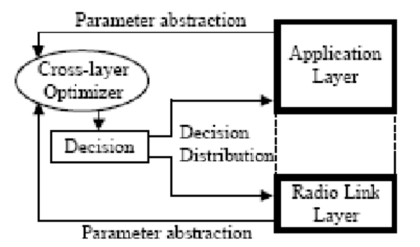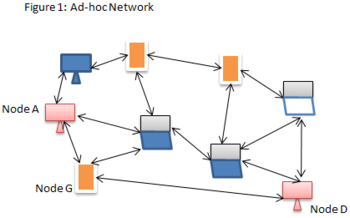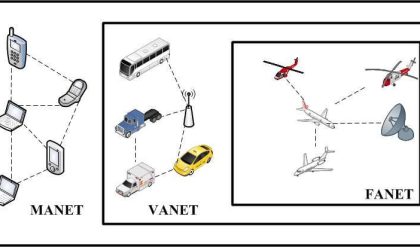The 802.11 standard is defined through several specifications of WLANs. It defines an over-the-air interface between a wireless client and a base station or between two wireless clients.
There are several specifications in the 802.11 family −
· 802.11 − This pertains to wireless LANs and provides 1 – or 2-Mbps transmission in the 2.4-GHz band using either frequency-hopping spread spectrum (FHSS) or direct-sequence spread spectrum (DSSS).
· 802.11a − This is an extension to 802.11 that pertains to wireless LANs and goes as fast as 54 Mbps in the 5-GHz band. 802.11a employs the orthogonal frequency division multiplexing (OFDM) encoding scheme as opposed to either FHSS or DSSS.
· 802.11b − The 802.11 high rate WiFi is an extension to 802.11 that pertains to wireless LANs and yields a connection as fast as 11 Mbps transmission (with a fallback to 5.5, 2, and 1 Mbps depending on strength of signal) in the 2.4-GHz band. The 802.11b specification uses only DSSS. Note that 802.11b was actually an amendment to the original 802.11 standard added in 1999 to permit wireless functionality to be analogous to hard-wired Ethernet connections.
· 802.11g − This pertains to wireless LANs and provides 20+ Mbps in the 2.4-GHz band.
Here is the technical comparison between the three major WiFi standards.
| Feature | WiFi (802.11b) | WiFi (802.11a/g) |
| PrimaryApplication | Wireless LAN | Wireless LAN |
| Frequency Band | 2.4 GHz ISM | 2.4 GHz ISM (g)5 GHz U-NII (a) |
| Channel Bandwidth | 25 MHz | 20 MHz |
| Half/Full Duplex | Half | Half |
| Radio Technology | Direct SequenceSpread Spectrum | OFDM(64-channels) |
| Bandwidth | <=0.44 bps/Hz | ≤=2.7 bps/Hz |
| Efficiency | ||
| Modulation | QPSK | BPSK, QPSK, 16-, 64-QAM |
| FEC | None | Convolutional Code |
| Encryption | Optional- RC4m (AES in 802.11i) | Optional- RC4(AES in 802.11i) |
| Mobility | In development | In development |
| Mesh | Vendor Proprietary | Vendor Proprietary |
| Access Protocol | CSMA/CA | CSMA/CA |





